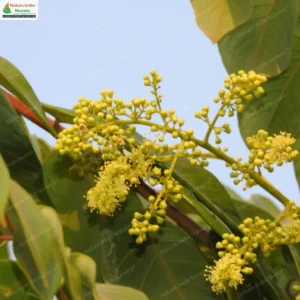Xylosma longifolia, commonly known as the Long-leaf Xylosma, is a deciduous shrub or small tree that can grow up to 10 meters in height. It features a trunk usually armed with simple and branched spines, and branchlets with axillary spines. The leaves are simple, alternate, and lanceolate to elliptic-oblong in shape, with a serrate-crenate to entire margin. The leaves are dark green above and paler beneath. The tree produces small, unisexual flowers in axillary and terminal racemes or panicles, and the fruit is globose, fleshy, and red, containing 3-8 seeds.
Habitat
Native to a wide range of regions, including Northeast Pakistan, South China, and Indo-China, Xylosma longifolia is found in countries such as India, Nepal, Myanmar, Thailand, Vietnam, and Laos. The tree thrives in wet tropical biomes, often found in forests and along riverbanks.
Planting and Care
-
Propagation: Can be propagated from seeds. Seeds should be sown in well-drained soil and kept moist until germination.
-
Soil: Prefers fertile, well-drained soil but can tolerate a range of soil types.
-
Watering: Requires regular watering, especially during dry periods, but is relatively drought-tolerant once established.
Additional Information
-
Wildlife Significance:
-
-
Habitat: Provides shelter and nesting sites for various bird species.
-
-
-
Food Source: The flowers attract pollinators, making it a “bee magnet” tree, and the red fleshy fruits are consumed by birds and small mammals.
-













